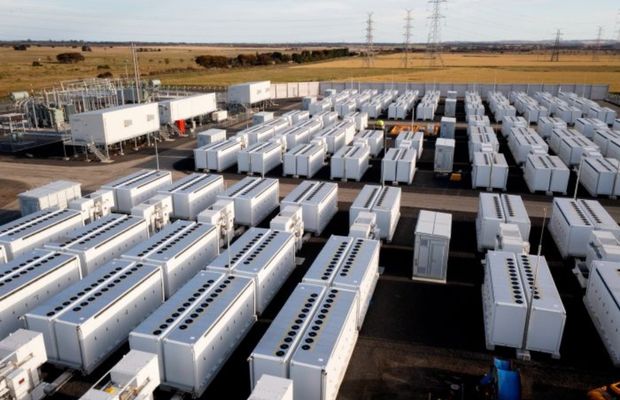The output power of high-voltage energy storage systems can vary significantly depending on the model and configuration, but generally, these systems are designed to meet substantial energy demands. They typically operate in the range of a few kilowatts to tens of kilowatts. Here are some common characteristics and examples:

- Capacity and Output Power: High-voltage energy storage systems can range in capacity from about 5 kilowatt-hours (kWh) to over 20 kWh. The output power—that is, the maximum power the system can deliver at any moment—can be from around 3 kilowatts (kW) to over 10 kW, sufficient to power major appliances or even entire homes during peak usage times or outages.
- Voltage Levels: High-voltage systems generally operate at voltages higher than standard 48V systems, often around 300V to 400V. This higher voltage can help reduce energy loss over the cables and increase the efficiency of power conversion from DC (direct current) stored in the batteries to AC (alternating current) used in the home.
- Examples of Systems: Brands like Tesla with their Powerwall, and LG with their RESU series, offer high-voltage systems. Tesla Powerwall, for example, has an energy capacity of 13.5 kWh and a peak output of 7 kW continuous power, which can go up to 10 kW for shorter periods.
- Applications: These systems are used not only for emergency backup power but also for daily use, like leveraging solar power generation, storing energy during low-cost periods, and supplying it during peak tariff times, thereby reducing electricity bills.
- Installation and Integration: High-voltage batteries are typically integrated with a home’s electrical system and may require professional installation. They often work in conjunction with solar panels and other renewable energy sources, requiring additional equipment like inverters to convert DC from the batteries and solar panels to AC.
- Energy Management Systems: High-voltage energy storage systems are often paired with sophisticated energy management systems. These systems help optimize energy use by automatically managing when to store energy and when to release it back into the home. They can make decisions based on energy usage patterns, weather predictions (in the case of solar energy generation), and electricity pricing fluctuations.
- Regulatory and Safety Concerns: The installation and operation of high-voltage energy storage systems must comply with local and national electrical codes and standards. Safety is a critical concern due to the high voltages and the chemical properties of the batteries (commonly lithium-ion). Proper casing, cooling, and ventilation are necessary to prevent overheating and potential fire hazards. Regular maintenance and monitoring are also essential to ensure that the systems operate safely over their expected lifetimes.
- Economic Considerations: While the initial investment in a high-voltage energy storage systems can be significant, the potential savings on electricity bills and the added convenience during power outages can offset these costs over time. In some regions, incentives or rebates may be available to help reduce the upfront costs. Additionally, as these systems become more common and technology improves, prices are likely to decrease.
- Environmental Impact: By enabling more efficient use of renewable energy sources, high-voltage energy storage systems can help reduce the overall carbon footprint. They allow for less reliance on fossil fuels by storing excess solar or wind energy for later use, particularly during peak demand times when more carbon-intensive power plants might otherwise be needed.
- Future Trends: The technology behind high-voltage energy storage systems rapidly evolving. Future advancements are expected to bring improvements in battery efficiency, lifespan, and safety. Moreover, as the integration of home energy management systems with smart home technologies progresses, users will likely have even more automated and finely tuned control over their energy consumption and storage.
In summary, high-voltage energy storage systems represent a significant step forward in residential energy management, offering enhanced power capacity, improved efficiency, and the ability to integrate seamlessly with renewable energy installations. As technology advances and costs decline, these systems are set to become an increasingly common feature in homes, contributing to greater energy independence and sustainability.
